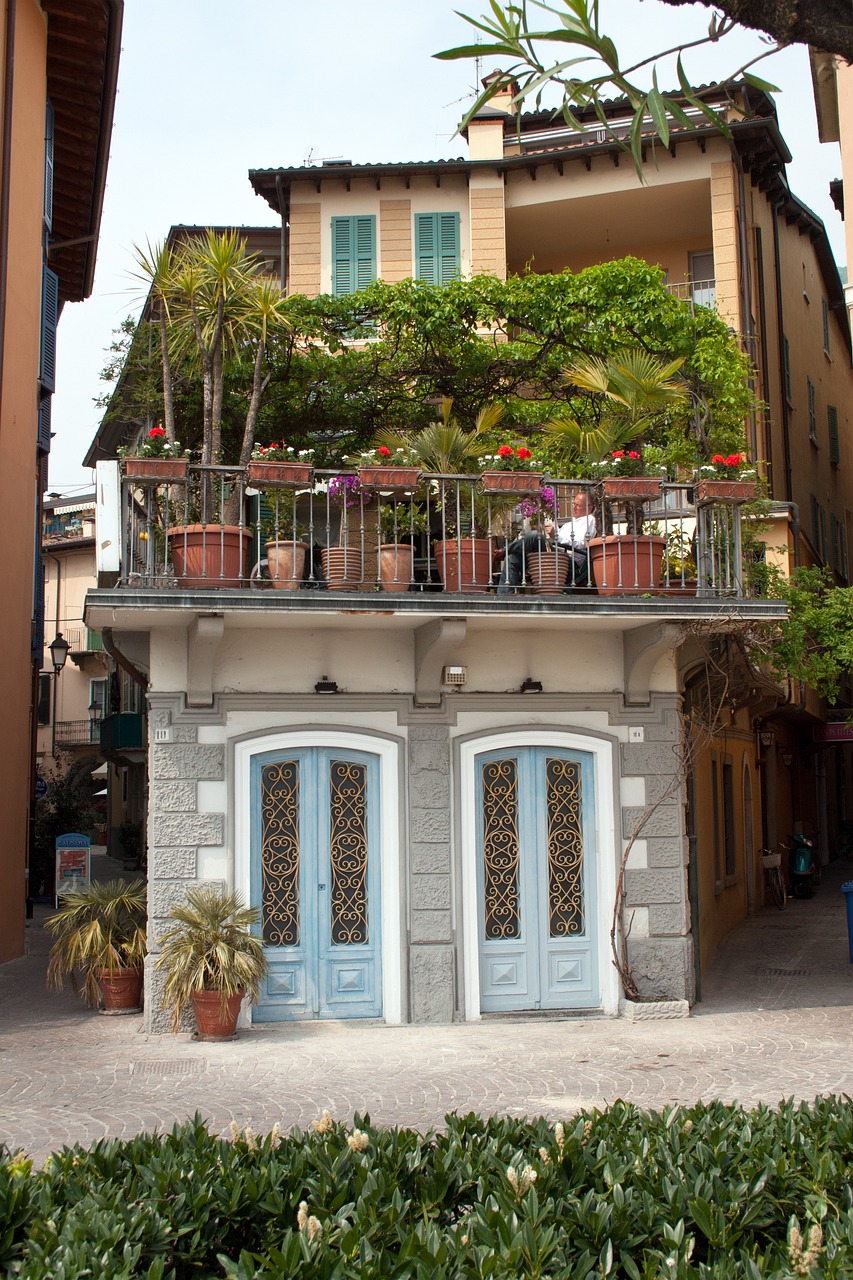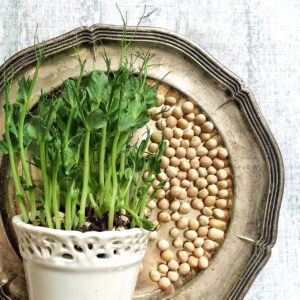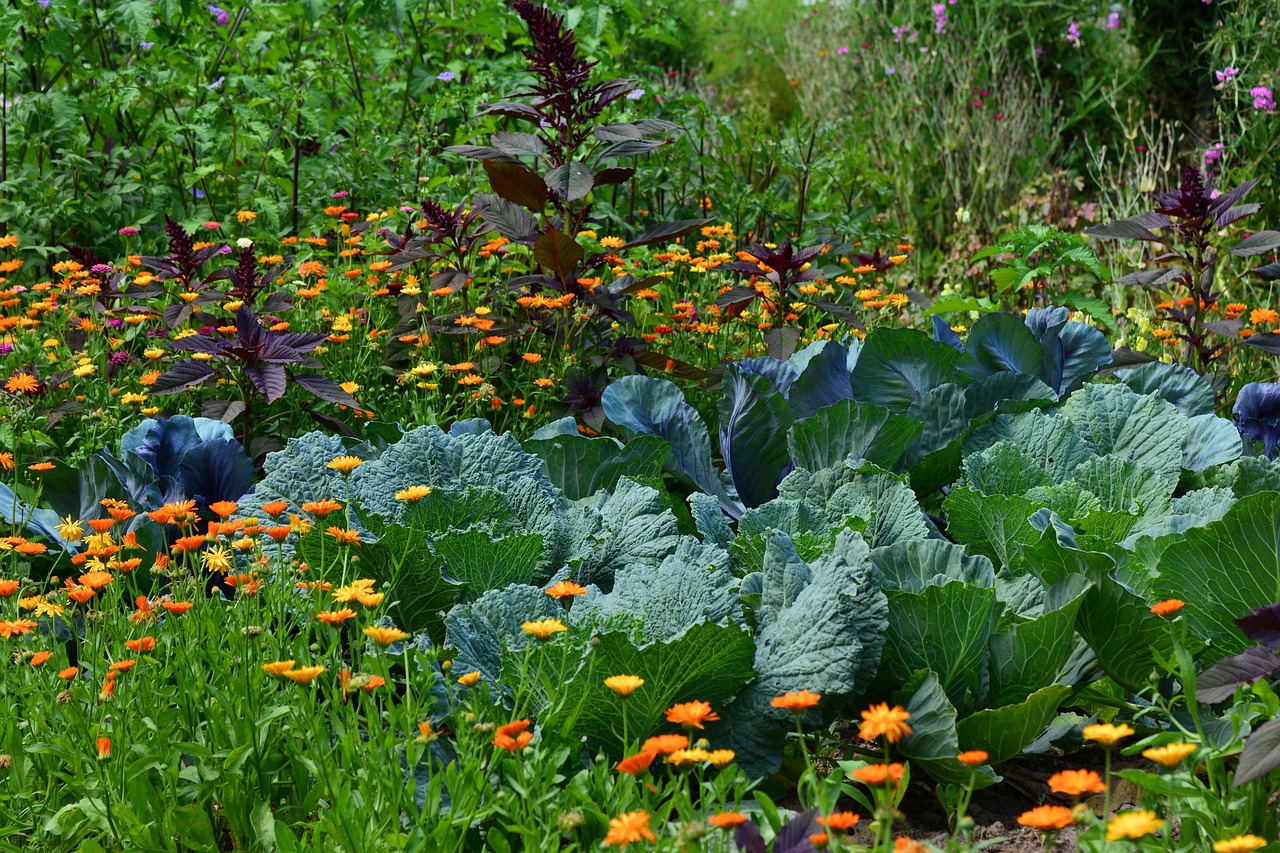In the previous post, we covered gardening indoors when you don’t have any access to the outside. But what if you have some outdoor space, but it’s not in contact with the ground, such as a balcony, deck, patio, or driveway? With the use of containers and maximizing space with vertical arrangements, you can grow a surprising amount of food in a small space—no ground required.
The trick to container gardening is frequent fertilization. Your plants won’t get all the nutrients they need from such a small amount of soil, so, similar to aquaponics, you have to feed the plants regularly.
And when every inch of space is precious and you’re growing relatively small amounts, don’t waste anything! Nearly all leaves, flowers, and seeds of edible vegetables are also edible, so plan on making a mixed salad with a few leaves harvested from your various plants; you will stretch out your lettuce harvest by a lot. Check out Garden Betty’s list of edible vegetable parts to see what you else you can eat.
This lady has probably the most space-efficient and diverse balcony garden of all the ones I have seen. She grows an amazing amount of food in 8 square meters (26 square feet). She even grows some flowers (although in rough economic times you might want to substitute flowers like hydrangeas for something like nasturtiums, which have both edible leaves and flowers, allowing you to have pretty flowers and food both).
Her video also covers foraging nettles to use as a natural pesticide and using the bokashi method of composting kitchen scraps to make her own fertilizer and compost.
If you like what you see, she has a video that’s more of an introduction to balcony gardening and how to plan it:
This is an even smaller balcony (2sm, or 6.5sf) and has a very unfortunate design in that it’s deeper than it is wide and it’s covered (making it a porch more than a balcony), so it gets a very limited amount of direct light, and even indirect light is reduced. She keeps her plants as close to the opening as possible, leaving the back portion of the balcony for her utility room, but you could fill the entire space with plants if you supplement the natural light with artificial or grow lights. (Also, make sure you place plants with the highest sunlight needs, like fruiting plants, closest to the sunlight, and keep your more shade-tolerant leafy vegetables and herbs towards the back.)
Also of interest is the flip up tables she made. This allows her to have a potting stand, even in this small space. She makes good use of the walls for hanging plants, as well, using a panel with pegboard hooks to allow her to hang many small pots at adjustable heights while minimizing the number of holes in the wall. (It also works well as a place to hang herbs and things like hot peppers to allow them to dry.)
Something she mentioned in another video, filmed during Covid lockdowns, is that she was really glad she had her little garden when so many stores were closed; it allowed her family to have fresh food—emphasizing how even a small amount of homegrown garden produce can be valuable. (And with the looming threat of “Disease X” and “climate lockdowns,” some of us are, more likely than not, going to find ourselves doing Covid lockdown 2.0, so it’s a good idea to get your little garden going while you can.)
This lady started her balcony garden in France for E200, plus added to it the second year with some homemade planters from salvaged wood. She doesn’t make as much use of vertical gardening as some, but her space is very aesthetically pleasing and I especially like her use of large sticks as supports for her tomato vines, which contributes to the look of the garden.
She covers the hügelkultur method of filling a raised bed, which saves money (less dirt required), saves weight, and actually helps balance the moisture in your soil, holding excess when it rains and watering the plants when it’s dry. She also does a direct composting method, whereby she just buries her scraps under the soil, where they can decompose while feeding the plants. And she shows how she salvages her used dirt and mixes it with fresh every year, which reduces long-term costs.
She also emphasizes that she is learning by doing and mistakes and trial and error are normal. What’s important is not to wait until everything is perfect, but that you get started; you will never improve if you don’t get started. Gardening is a skill like cooking or knitting or carpentry; you will not be very good at the beginning, but if you keep practicing, you will get better.
This couple has a more simple balcony garden then the others shown here, but that’s due to their weather conditions. Their balcony is subjected to a lot of wind, which is why they can’t do hanging plants or vertical towers higher than their railing. They make it work, however, with plants in simple pots and one short vertical growing tower. So you don’t need a lot of fancy equipment to get started and you can work around any challenges unique to your climate.
The principles of growing on a balcony are easily scaled up for use on a deck, patio, or even a driveway.
This combo mini-raised bed and container system works well for this gentleman on a concrete sidewalk around his house.
This 3 pot experiment in vertical growing shows the potential of growing in a driveway. Where driveways abut houses, there is often bare walls and walking space that make the perfect place for vertical gardening. This gentleman grew pole beans and tomatoes between his garage doors, but many other plants can be trellised, including squashes and small melons. A vertical trellis can not only support climbing plants, but if it’s sturdy, you can also hang containers from it, so you can grow non-climbing plants as well. And in the pots or raised beds, low-growing plants, like lettuces, herbs, and strawberries, can be planted around the climbing plants to maximize use of the soil and to shade the roots of the fruiting plant, allowing it to retain more moisture and keeping its roots from baking on top of the concrete in the summer.
If you have a bit more space—perhaps you have a driveway meant for 2 cars, but you only have one, or you can use street parking instead—then you can use large containers, pots, or raised beds like this lady to create an abundant garden on the concrete.
This lady grows on her deck using vertical planters, one of which she features in her video. She shows the set-up, features, and what’s possible to harvest from it.
If you need a more budget-friendly open, here is a rolling vertical tower, but made from plastic crates and recycled (probably pallet) wood:
This gardener uses waste containers, like empty drink and food bottles and laundry detergent bottles, and recycled wood to build vertical planters and hanging pots for his patio, walkways, and other concrete spaces.
Just make sure that you don’t use any bottles that contained chemicals, like motor oil, transmission fluid or RoundUp. The bottles can absorb these chemicals and leach them back out into your soil, where your plant takes them up and you wind up eating them.
This gentleman started out with towers made from cola bottles zip-tied to a piece of fencing. Then he added towers made from small food buckets. He grew lettuces and herbs in the bottles, and peppers in the larger buckets. The following year, he added tomatoes in pots to the opposite side of the fence and used that to trellis his tomatoes. He also used bottles to create drop irrigation for his towers.
If you strip off the bottle labels, the whole thing looks quite neat once it’s in full swing–like a high-end green wall made from succulents. Only you get to eat this wall.
This sort of wall could serve as a windbreak on a windy balcony, or act as a railing around a deck, or as a divider wall to separate a patio from the yard.
You can also make raised bed containers using plastic totes. I have had good success with these indoors, like when I want to overwinter plants or get a start on some seeds, so I can recommend them. They’re a lot easier to manage both in terms of weight and construction (or rather the lack thereof) compared to wooden raised beds. The drawback to them, however, is that the sunlight will degrade your plastic and cause it to become brittle. And it’s a pain to try to move one of these things when it’s full of dirt and it’s breaking apart in your hands like sugar glass. Expect no more than 2 seasons from one container—maybe only one if your location gets especially intense rays. Also, there are a lot of flimsy plastic totes on the market these days; try to only buy totes that are rigid. This makes them easier to move once they are full of dirt and you’re more likely to get 2 seasons out of them.
This video, by MIgardener (whose channel I recommend), covers what sorts of vegetables to grow on balconies and patios and what varieties will do better in that microclimate.
For those of you who don’t know, a “microclimate” is a climate within a climate. For instance, I live in TN, so I have an overall climate of hot, humid summers, mild winters with occasional dips into more moderate temps, and a fairly even distribution of rain, averaging about 1” per week throughout the year. But if you look at this patch of ground in my yard and compare it to that patch of ground, there are subtle differences. For example, my house is on top of a small hill. When I walk down my driveway into a part of the yard I have dubbed “the holler” because it’s lower than the surrounding terrain, like a bowl, I can feel the temperature drop; it has to be several degrees cooler than the hill if it is that noticeable. This is caused by colder air settling in lower spots. Likewise, plants on the western side of a house in TN are going to get burned up by the setting sun in summer, while the same variety of plants on the eastern or northern side of the house may soldier on quite nicely. But, when the weather changes, those summer plants on the cooler side of the house are going to go first, while the plants still getting heated up by the western sun will typically last longer into the fall.
But it’s not all about the weather; objects also create microclimates. The most obvious effect is trees or buildings that cast shade. The woods around my house keep all but a brief period of western sunlight off my yard, so I don’t have plants burning up in the August heat. Concrete—both paving and blocks—as well as rocks, also create microclimates because they absorb heat during the day and then release it at night. On a patio or driveway in the summer time, this can cause your plants to overheat, but the rest of the year it helps keep your plants going when the rest of your yard plants have gone dormant.
Interested in learning more about non-traditional gardening methods? Check out all the posts in this series here: Growing Resilience: Victory Gardens for Everyone


